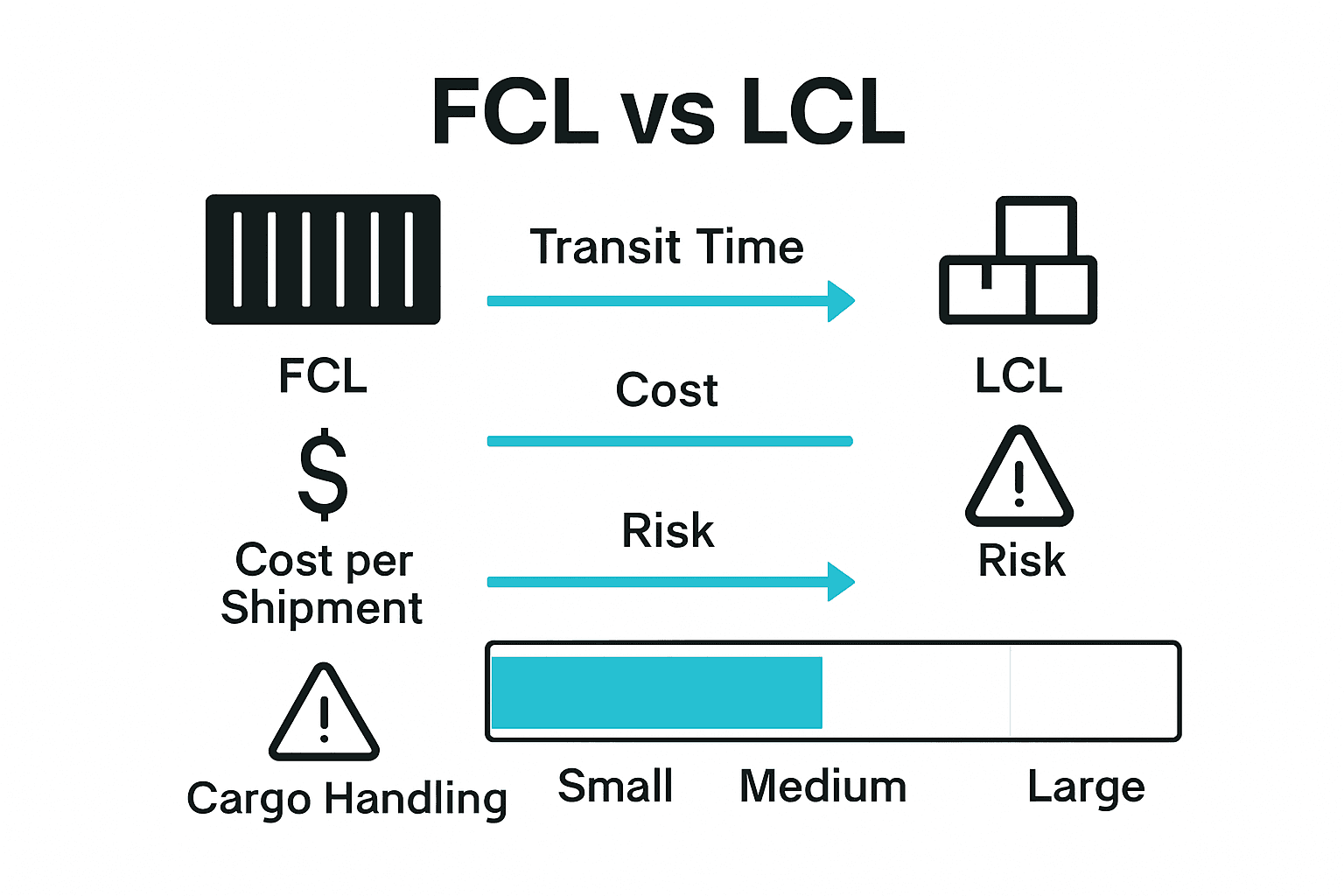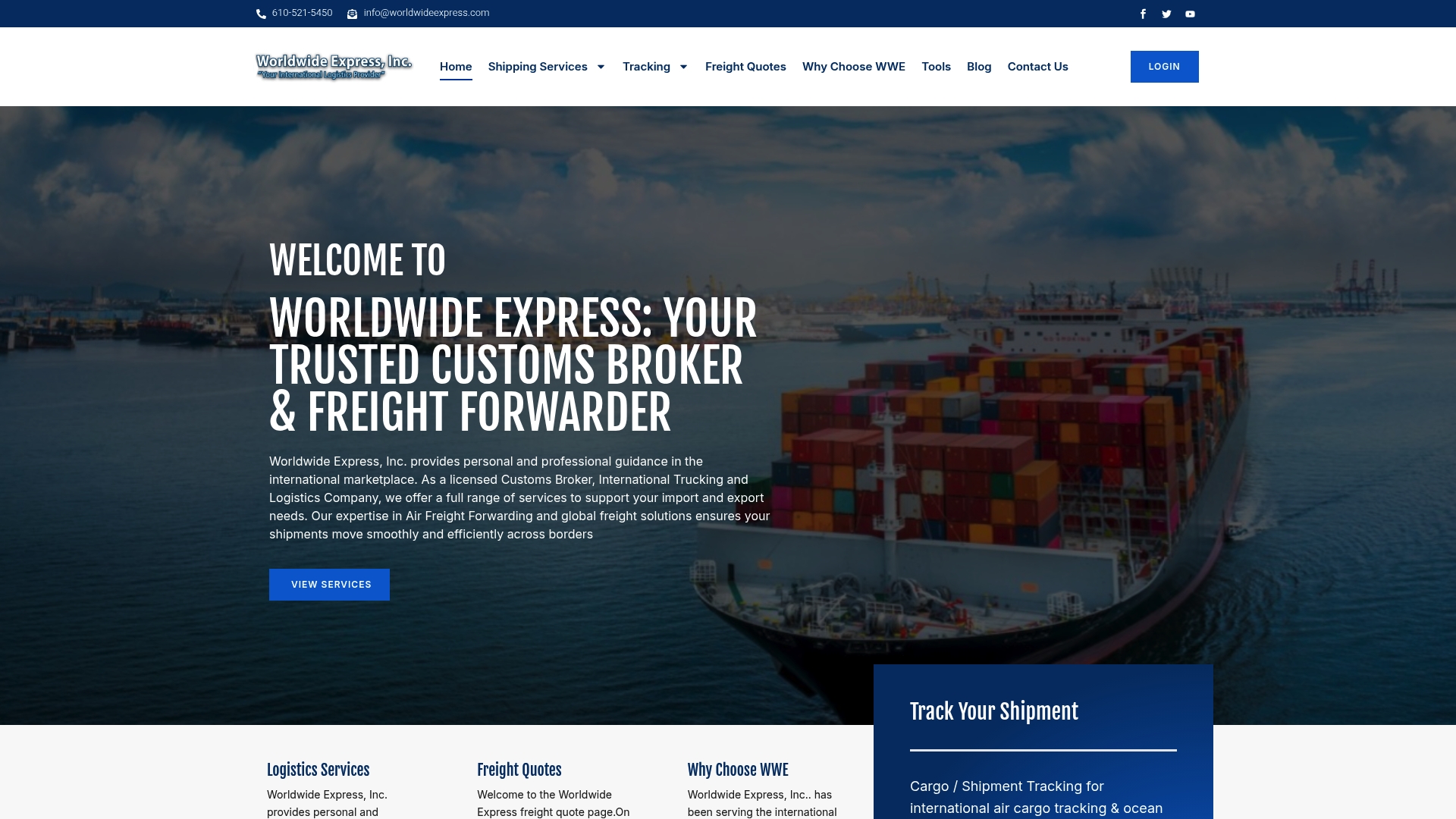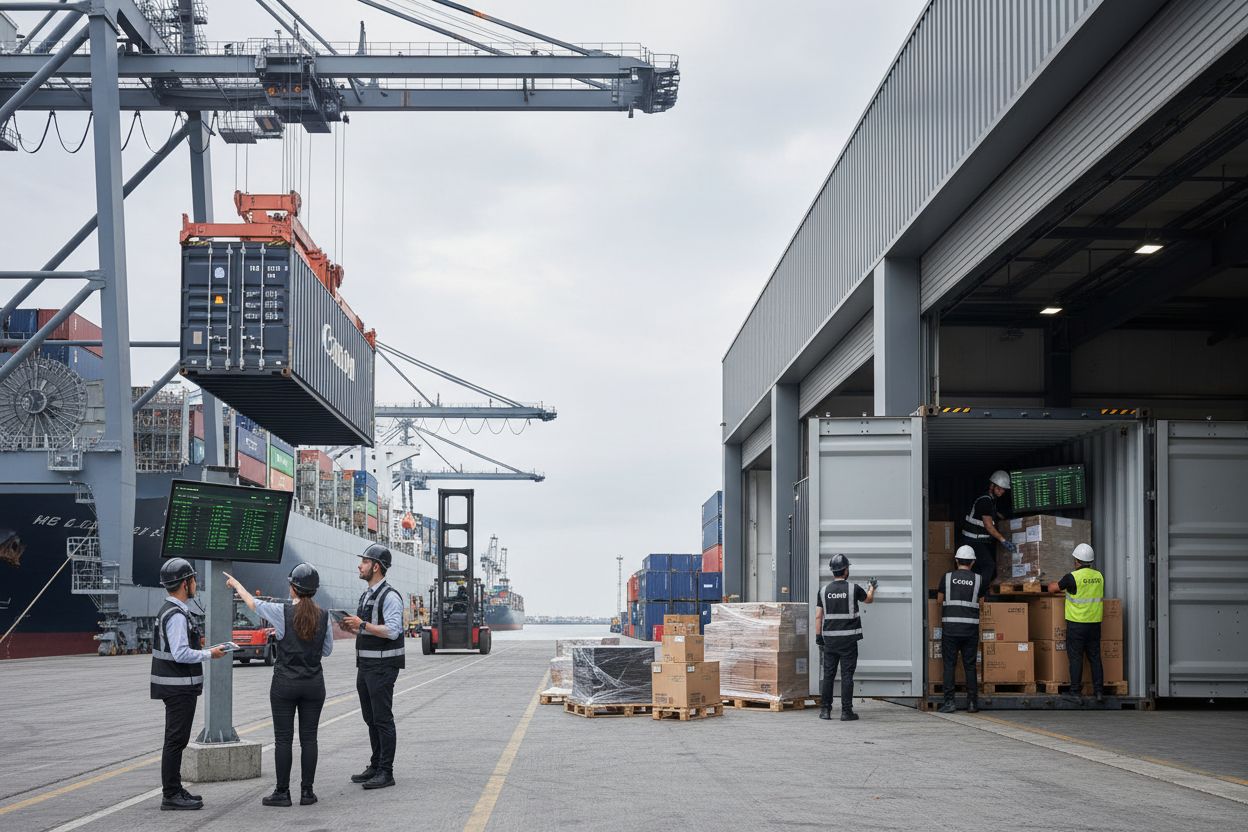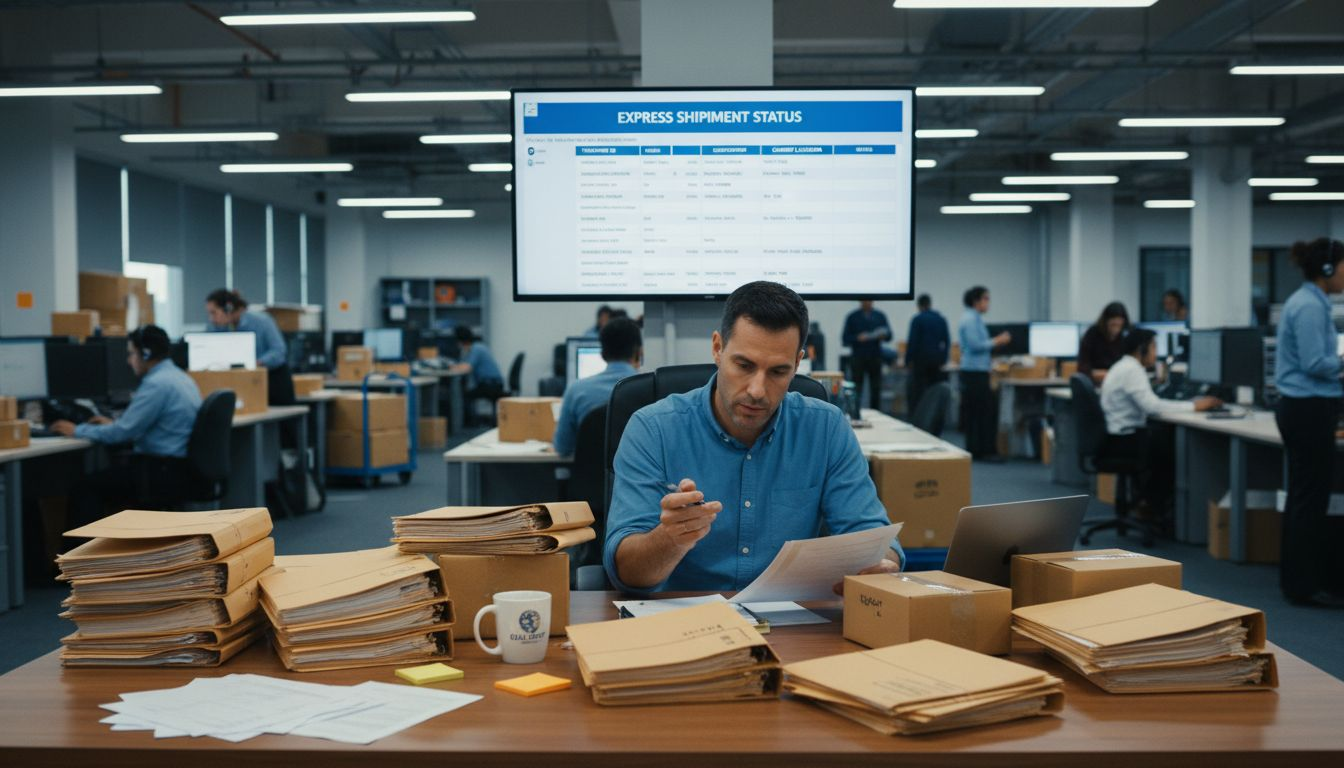Did you know that over 90 percent of global trade moves by sea each year? Choosing the right shipping method can mean the difference between saving money and facing unexpected delays. The decision between Full Container Load and Less than Container Load shipping impacts how fast your goods arrive, what you pay, and how secure your cargo stays on the journey. Understanding these options helps businesses ship smarter and avoid costly surprises.
Table of Contents
- Defining LCL and FCL Shipping Methods
- Main Differences Between LCL and FCL
- How the LCL and FCL Processes Work
- Cost Factors and Risk Considerations
- Choosing Between LCL and FCL for Your Needs
Key Takeaways
| Point | Details |
|---|---|
| FCL Benefits | Full Container Load (FCL) is ideal for large shipments, offering faster transit times and enhanced security through reduced handling. |
| LCL Advantages | Less-than-Container Load (LCL) provides cost-effective shipping for smaller volumes, however, it includes higher per-unit costs and longer transit times due to consolidation. |
| Choosing FCL or LCL | Opt for FCL when shipping volumes exceed 15 cubic meters or when transporting high-value items; consider LCL for shipments between 2 to 13 cubic meters, especially with budget constraints. |
| Risk and Cost Assessment | Evaluate the trade-offs in handling complexity and potential damage; FCL generally offers lower risk and predictable costs, whereas LCL complicates pricing and logistics with more fees. |
Defining LCL and FCL Shipping Methods
In international trade and logistics, shipping methods play a critical role in determining how businesses transport their goods across borders. Two primary shipping approaches stand out: Full Container Load (FCL) and Less-than-Container Load (LCL) shipping, each offering unique advantages for different cargo volumes and business needs.
According to research from global shipping experts, Full Container Load (FCL) involves dedicating an entire shipping container exclusively to one shipper’s cargo. This method provides several key benefits:
- Faster transit times
- Enhanced cargo security
- Reduced risk of damage from multiple handling processes
- Direct container transportation without intermediate consolidation
Less-than-Container Load (LCL) shipping represents a flexible alternative for businesses with smaller shipment volumes. In this method, multiple shippers’ goods are consolidated into a single container, making it a cost-effective solution for companies not requiring a full container. As shipping industry data indicates, LCL allows businesses to share container space and transportation costs, which can significantly reduce individual shipping expenses.
While FCL offers more control and potentially faster delivery, LCL provides economic flexibility for smaller shipments. Understanding these shipping methods helps businesses make informed decisions about their international freight strategies, balancing cost, speed, and cargo volume requirements. Check out our freight terms definitions guide for more insights into international shipping terminology.
Main Differences Between LCL and FCL
Shipping container methods differ significantly in terms of cost, transit time, and cargo handling. Understanding these nuanced differences helps businesses make strategic shipping decisions aligned with their specific logistics requirements.
Here’s a comparison of the key differences between FCL and LCL shipping methods:
| Factor | Full Container Load (FCL) | Less-than-Container Load (LCL) |
|---|---|---|
| Cargo Volume | 13+ cubic meters | 2-13 cubic meters |
| Cost Efficiency | Lower per-unit for large shipments |
Flexible for small but higher per-unit |
| Transit Time | Faster Direct transport |
Longer Due to consolidation |
| Cargo Handling | Minimal Sealed container |
Frequent Consolidation required |
| Security | High | Moderate |
| Pricing Structure | Predictable | Complex Extra fees included |
According to research from international logistics experts, the primary distinctions between FCL and LCL shipping revolve around volume, cost-effectiveness, and operational efficiency.
 Full Container Load (FCL) becomes more economical for shipments exceeding 13 cubic meters, offering several compelling advantages:
Full Container Load (FCL) becomes more economical for shipments exceeding 13 cubic meters, offering several compelling advantages:
- Faster transit times
- Reduced cargo handling
- Lower risk of potential damage
- Direct transportation without intermediate stops
- Greater control over container contents
Conversely, Less-than-Container Load (LCL) shipping presents an optimal solution for smaller shipment volumes between 2 to 13 cubic meters. As international logistics research indicates, LCL shipments involve consolidating multiple shippers’ goods into a single container, which introduces unique operational considerations.
The key trade-offs emerge in transit predictability and handling complexity. FCL shipments typically experience more streamlined transportation, with containers sealed from origin to destination. LCL shipments, while more flexible, require additional consolidation and deconsolidation processes that can potentially extend transit times and increase the risk of cargo handling incidents. Check out our freight terms definitions guide to dive deeper into shipping terminology and strategies.
How the LCL and FCL Processes Work
International shipping processes involve complex logistics that differ significantly between Full Container Load (FCL) and Less-than-Container Load (LCL) methods. Understanding these processes helps businesses choose the most efficient shipping strategy for their specific cargo requirements.
According to shipping logistics research, the FCL shipping process follows a straightforward pathway:
- A single shipper fills an entire container
- The container is sealed at the point of origin
- Direct transportation to the destination port
- Container remains sealed until final delivery
- Minimal handling reduces potential cargo damage
In contrast, the LCL shipping process involves more intricate steps:
- Multiple shippers’ goods are consolidated at a freight station
- Cargo is carefully packed and secured within a shared container
- Container is transported to the destination port
- Upon arrival, the container undergoes deconsolidation
- Individual shipments are separated and delivered to respective consignees
The key difference lies in handling complexity.
IMAGE:descriptive_key_1] FCL shipments maintain cargo integrity through minimal intervention, while LCL shipments require additional logistics management to ensure accurate sorting and delivery. This process demands more coordination but provides flexibility for businesses with smaller shipping volumes. Check out our [freight terms definitions guide to further understand shipping terminology and nuances.
Cost Factors and Risk Considerations
Shipping logistics demand careful financial and risk assessments when choosing between Full Container Load (FCL) and Less-than-Container Load (LCL) methods. Understanding the economic and operational nuances helps businesses make informed shipping decisions.
According to research from global shipping experts, FCL shipping presents several compelling cost and risk advantages:
- Lower per-unit transportation costs for larger shipments
- Reduced handling risks due to sealed container
- Faster transit times
- Predictable pricing structure
- Minimal risk of cargo contamination or damage
Less-than-Container Load (LCL) shipping introduces more complex cost considerations. Logistics analysis reveals that while LCL offers flexibility for smaller shipments, it comes with unique financial challenges:
- Higher per-unit shipping costs
- Additional consolidation and deconsolidation fees
- Increased potential for cargo damage
- Longer transit times
- More complex pricing models
The financial trade-offs depend on shipment volume, frequency, and specific business requirements. Smaller businesses might find LCL more economical, while larger enterprises often benefit from FCL’s predictability and cost-efficiency. Careful analysis of your specific shipping needs will determine the most strategic approach.
VIDEO:video_content] Check out our [freight terms definitions guide to dive deeper into shipping cost strategies.
Choosing Between LCL and FCL for Your Needs
Shipping strategy requires careful evaluation of your specific business requirements, cargo volume, and logistical constraints. Making an informed decision between Full Container Load (FCL) and Less-than-Container Load (LCL) shipping can significantly impact your operational efficiency and bottom line.
According to international logistics research, businesses should consider FCL shipping when:
- Shipping volumes exceed 15 cubic meters
- Transporting time-sensitive or high-value goods
- Requiring maximum cargo security
- Seeking faster transit times
- Needing minimal handling of goods
- Prioritizing predictable delivery schedules
Freight logistics experts recommend LCL shipping for scenarios including:
- Shipment volumes between 2 to 13 cubic meters
- Limited budget constraints
- Flexibility in transit times
- Smaller product quantities
- Need for cost-effective shipping solutions
- Businesses with irregular shipping frequencies
Ultimately, the decision hinges on balancing cost, speed, cargo volume, and risk tolerance. Smaller businesses might lean towards LCL for financial flexibility, while larger enterprises often prefer FCL’s predictability and efficiency. Carefully assess your specific shipping needs and consult with logistics professionals. Check out our freight terms definitions guide to further refine your shipping strategy.
Simplify Your Shipping Decisions with Expert Solutions
Choosing between LCL and FCL shipping can be challenging with so many factors like cargo volume, transit time, cost, and risk to consider. Many businesses face uncertainty about the best method to optimize efficiency while safeguarding their shipments. This guide breaks down key concepts such as shipment consolidation, container security, and cost trade-offs to help you make informed decisions.
At Worldwide Express, Inc., we understand these complexities and deliver tailored international shipping solutions that align with your specific needs. Whether you require flexible options for smaller shipments or fast, secure transportation for full container loads, our experts manage customs clearance, documentation, and global tracking to provide peace of mind throughout the process.
Take control of your freight strategy today by exploring our Uncategorized solutions and the comprehensive services offered at Worldwide Express.

Ready to turn shipping challenges into streamlined success Discover how our specialized services can save you time and reduce costs. Visit Worldwide Express now to get a personalized freight quote and start optimizing your international shipments.
Frequently Asked Questions
What is the difference between FCL and LCL shipping?
FCL (Full Container Load) shipping involves dedicating an entire container to one shipper’s cargo, offering benefits like faster transit and enhanced security. LCL (Less-than-Container Load) shipping consolidates cargo from multiple shippers into a single container, making it more cost-effective for smaller shipments but with potentially longer transit times.
When should I choose FCL shipping for my business needs?
Choose FCL shipping when your shipment volume exceeds 15 cubic meters, you are transporting time-sensitive or high-value goods, or you want maximum cargo security and faster transit times.
What are the advantages of using LCL shipping?
LCL shipping is advantageous for smaller shipment volumes between 2 to 13 cubic meters, offering flexibility in cost and transit times, making it ideal for businesses with budget constraints or irregular shipping frequencies.
How does the LCL shipping process work compared to FCL?
In the LCL shipping process, multiple shippers’ goods are consolidated into one container, requiring deconsolidation at the destination, which can complicate logistics. In contrast, FCL maintains a sealed container throughout its journey, minimizing handling and risk of damage.
Recommended
- Blockchain in Shipping: Complete Guide for Logistics – Worldwide Express, Inc.
- Understanding Letter of Credit Shipping for International Trade – Worldwide Express, Inc.
- Blog – Worldwide Express, Inc.
- 8 Key Freight Terms Definitions Every Importer Should Know – Worldwide Express, Inc.
- What Is International Shipping? Guide for UK Movers 2025 | Schott Removals
- Wat is shipping management? Uitleg en begrip hiervan – Send with Parcel International






